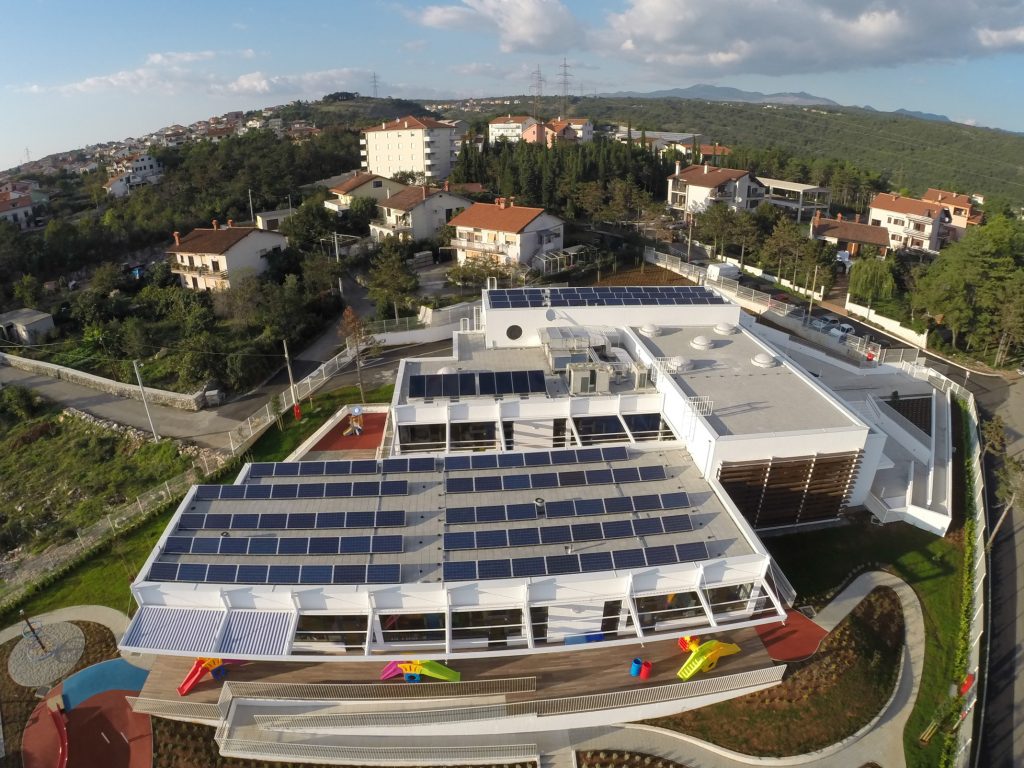Municipal planning and clever funding strategies
In 2016, Rijeka adopted an Energy Efficiency Action Plan for the period 2017-2019. In February 2020, it moved to an Efficiency Action Plan for 2020-2022, which commits to investing 171.6 million kuna (€22.9 million) into climate protection measures over the plan period. The funding is a combination of the city’s own funds and investments from city-owned companies, the national Environmental Protection and Energy Efficiency Fund, and EU structural funds. The plan covers a broad array of sectors, including buildings, solar energy, public lighting and public transport, as well as electric garbage trucks.
Reforming construction and heating
Currently, buildings account for 59% of the city’s total annual energy consumption, which shows the great potential for energy savings. Rijeka’s first priority in the housing sector is the renovation of public buildings, which will lead to estimated energy consumption savings of 50-70% per year. Measures planned include energy certification, renovation of city-owned buildings, and the installation of solar panels on rooftops.
The city’s district heating system is undergoing modernisation. Prior to 2016, the city had a ruinous 12.5 kilometre network of hot water pipes more than 40 years old. In Phase 1 of this project (2016-2019) 4 km of pipes were renewed and the remaining 8.5 km will be renovated in Phase 2, so that the complete system is replaced with new pre-insulated pipes, with a significant reduction in energy losses.
The project was applied through the ITU mechanism for urban agglomerations according to the EU’s Operational Programme Competitiveness and Cohesion 2014-2020. Smart metering and smart meter data management will be introduced to combine the measures with smart city infrastructure.
Climate-friendly transport
The transport sector makes up about 39% of Rijeka’s energy consumption. This is why the administration is planning a number of measures to make the city’s transport more climate-friendly. It will invest in new garbage trucks powered by electricity and fossil gas, and is working on a software solution to optimize garbage truck routes to reduce their emissions even further. Public buses will be converted to lower emission models. Rijeka will introduce smart traffic lights that optimize the transport flow and a bike-sharing scheme which will include a number of electric bicycles.
Switching to renewable energy
Currently, Rijeka’s energy generation is dominated by a 320 MW oil-fired thermal power station to the east of the city. However, in order to introduce renewable energy generation, the city administration supports PV micro power plants and household installations. In cooperation with the regional energy agency, Kvarner, the city is implementing a project called Green Energy in My Home to encourage the use of renewable energy in households. Through this project, 40% of the cost of installing a renewable system is co-financed. To date, 38 households have received subsidies for installing solar panels for water heating and biofuel heaters.
The administration has been trying to set an example since 2009, when it first installed PV panels on a government building. In 2013, it added PV panels to six other buildings, adding up to a total capacity of 80 MW. New buildings will have solar panels for water heating.
Furthermore, the Croatian oil and gas company INA is planning to establish hydrogen filling stations for fuel cells in its Rijeka refinery. INA is now working on a programme for infrastructure development for hydrogen production, distribution, and supply.

The City Administration building – The photovoltaic power station consists of 36 modules with a total power of 9.9 kW. It’s an example of synergy of protected cultural heritage and modern technology. Expected annual energy production is 12 MWh. Image Credit: Municipality of Rijeka.
Citizen involvement for a greener future
The city of Rijeka participated in the EU project FIESTA (Families Intelligent Energy Saving Targeted Action) which ran from 2014 to 2017. 150 families from Rijeka received advice on their energy consumption behaviour and about energy-efficient home appliances.
The City holds an Energy Week, during the EU’s annual Sustainable Energy Week in order to train people of all ages in how to use sustainable energy in everyday life.
All this shows that the city of Rijeka, together with its citizens and public and private sector companies, has for many years been developing an energy policy based on the principles of environment protection, energy efficiency, the use of renewable energy sources and sustainable development.


